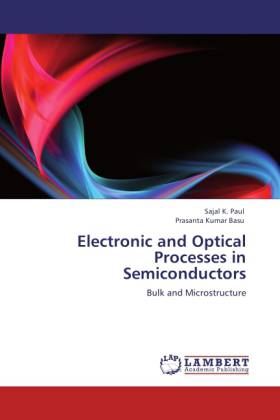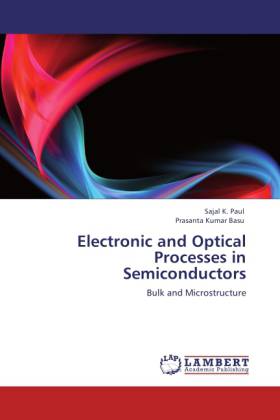
- Afhalen na 1 uur in een winkel met voorraad
- Gratis thuislevering in België vanaf € 30
- Ruim aanbod met 7 miljoen producten
- Afhalen na 1 uur in een winkel met voorraad
- Gratis thuislevering in België vanaf € 30
- Ruim aanbod met 7 miljoen producten
Zoeken
Electronic and Optical Processes in Semiconductors
Bulk and Microstructure
Sajal K Paul, Prasanta Kumar Basu
Paperback | Engels
€ 58,45
+ 116 punten
Omschrijving
The dominance of electronics in every steps of present day human civilization is the blessing of knowledge on properties, both electronic and optical, of bulk semiconductors(SCs) and their microstructures. The effective use of SCs and their microstructures for various applications depends on their detailed electronic and optical properties. This book discusses the bandgap of semiconductors as a function of both temperature and carrier density. The physics of MIS diodes is introduced and the variation of capacitance with voltage and carrier density is discussed. The methods of calculating the subband energies and wave functions in quantum wells(QWs) and superlattics(SLs) are then outlined.The concepts of strained layer epitaxy, critical thickness and the band structures are introduced taking Si-(Si, Ge)QWs as an example. A model calculation of mobility for alloy-disorder scattering and different phonon scattering is carried out for Si-(Si, Ge)QW. A brief description of the absorption processes in indirect gap bulk materials and QWs is finally given. It is believed that this book will be useful for undergraduate and postgraduate students, researchers and electronic device designers.
Specificaties
Betrokkenen
- Auteur(s):
- Uitgeverij:
Inhoud
- Aantal bladzijden:
- 160
- Taal:
- Engels
Eigenschappen
- Productcode (EAN):
- 9783845401812
- Verschijningsdatum:
- 27/07/2011
- Uitvoering:
- Paperback
- Formaat:
- Trade paperback (VS)
- Afmetingen:
- 152 mm x 229 mm
- Gewicht:
- 244 g

Alleen bij Standaard Boekhandel
+ 116 punten op je klantenkaart van Standaard Boekhandel
Beoordelingen
We publiceren alleen reviews die voldoen aan de voorwaarden voor reviews. Bekijk onze voorwaarden voor reviews.











